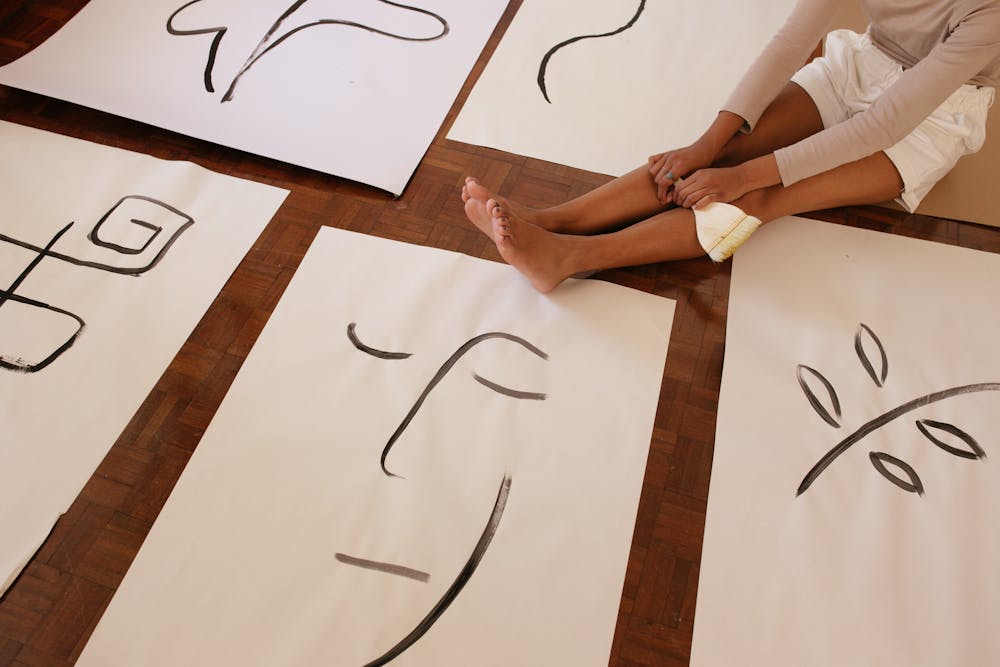Art therapy, a form of expressive therapy that utilizes the creative process of making art to improve a person’s physical, mental, and emotional well-being, has garnered significant attention across various fields. This article aims to explore the multifaceted dimensions of art therapy, emphasizing its core principles, applications across different demographics, its psychological benefits, and real-world success stories that underscore its transformative potential.
The Essence of Art Therapy: Understanding Its Core and Application
Art therapy is rooted in the belief that the creative process involved in artistic self-expression helps people to resolve conflicts and problems, develop interpersonal skills, manage behavior, reduce stress, increase self-esteem and self-awareness, and achieve insight. It offers an alternative language, one of images and symbols, that can express feelings and thoughts that might be difficult to articulate in words.
At its core, art therapy integrates psychotherapeutic techniques with the creative process to improve mental health and well-being. It is not merely an art class; it is a therapeutic intervention that engages individuals in art-making under the guidance of a qualified art therapist. These professionals are trained to discern the nonverbal symbols and metaphors that are communicated within the creative process, which might not be recognized by the clients themselves.
The application of art therapy spans various settings, including hospitals, wellness centers, schools, psychiatric and rehabilitation facilities, and private practices. It caters to a broad spectrum of clients, ranging from children facing developmental challenges to adults experiencing mental health issues, and elderly individuals coping with aging-related concerns.
Art Therapy in Practice: Techniques and Approaches for Various Age Groups
Art therapy employs a diverse range of techniques and approaches tailored to meet the unique needs of different age groups and populations. For children, art therapy sessions might focus on play and storytelling through art, facilitating a safe and nurturing environment where they can express themselves freely. For adolescents, it can serve as a non-threatening medium to explore identity, self-expression, and emotional challenges.
In the context of adults, art therapy can be particularly beneficial for those dealing with mental health issues, trauma, or substance abuse, providing a constructive outlet for expression and self-exploration. Techniques may include painting, drawing, sculpture, collage, and other media, offering adults a versatile toolkit for personal expression and introspection.
For the elderly, art therapy can help to improve cognitive function, encourage social interaction, and foster a sense of personal accomplishment. In these sessions, emphasis might be placed on life review, memory, and legacy projects, helping older adults to reflect on their lives, maintain their cognitive functions, and enhance their emotional well-being.
The Psychological Impact of Art Therapy: From Theory to Real-World Applications
The psychological impact of art therapy is profound and far-reaching, offering insights into the individual’s mind, facilitating emotional release, and fostering healing and growth. The theoretical underpinnings of art therapy draw from various psychological theories, including psychoanalytic, cognitive-behavioral, and humanistic approaches, emphasizing its versatility and adaptability to cater to individual needs.
In therapeutic settings, art therapy provides a unique opportunity for expression and reflection, enabling individuals to explore their emotions, confront internal conflicts, and work through traumatic experiences. Through the creative process, clients can externalize their inner experiences, gain new perspectives, and embark on a path toward healing and self-discovery.
Research underscores the efficacy of art therapy in reducing symptoms of anxiety, depression, and stress, while enhancing emotional regulation, self-esteem, and overall quality of life. In clinical practice, it is used as an adjunct to conventional therapies, offering a holistic approach that addresses the psychological, emotional, and social dimensions of well-being.
Real-world applications of art therapy reveal its transformative potential across diverse populations and settings. In hospitals, it assists patients in coping with illness and treatment, providing a therapeutic outlet to express their feelings and fears. In mental health settings, it aids individuals in processing complex emotions and traumatic events, facilitating recovery and resilience. In schools, art therapy supports students’ emotional and social development, enhancing their ability to learn and interact.
Art Therapy Success Stories: Transformative Experiences and Outcomes
Art therapy has been instrumental in transforming lives, as evidenced by numerous success stories from individuals who have experienced its healing power. These narratives not only highlight the personal achievements and breakthroughs facilitated by art therapy but also illustrate the broad spectrum of its applicability and effectiveness.
- Overcoming Trauma: Many individuals have found solace and healing in art therapy after experiencing traumatic events. Through creating art, they have been able to process their experiences, express their emotions, and find a sense of closure and peace.
- Enhancing Mental Health: For those battling mental health issues, art therapy has served as a vital component of their treatment plan, offering a creative outlet to explore their thoughts and feelings, which has led to significant improvements in their mental well-being.
- Supporting Developmental Growth: Children and adolescents, particularly those with developmental or behavioral challenges, have benefited greatly from art therapy. Engaging in artistic activities has helped them develop better coping strategies, enhanced their communication skills, and fostered their emotional and social growth.
- Aiding in Rehabilitation and Recovery: In rehabilitation settings, art therapy has facilitated the recovery process for individuals recovering from physical or substance-related issues, enabling them to express themselves creatively and build a sense of identity and purpose.
These stories underscore the transformative power of art therapy, demonstrating its capacity to heal, empower, and inspire individuals across various stages of life and challenges. Through the universal language of art, art therapy continues to make a profound impact, offering a beacon of hope and a path toward healing and self-discovery.








